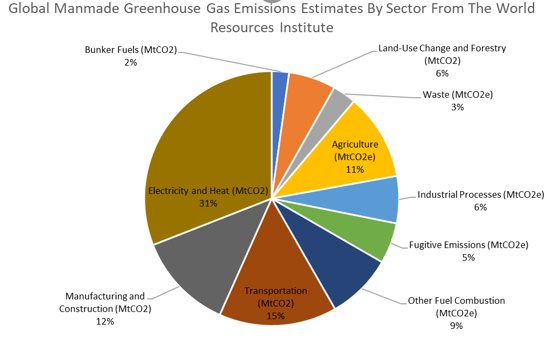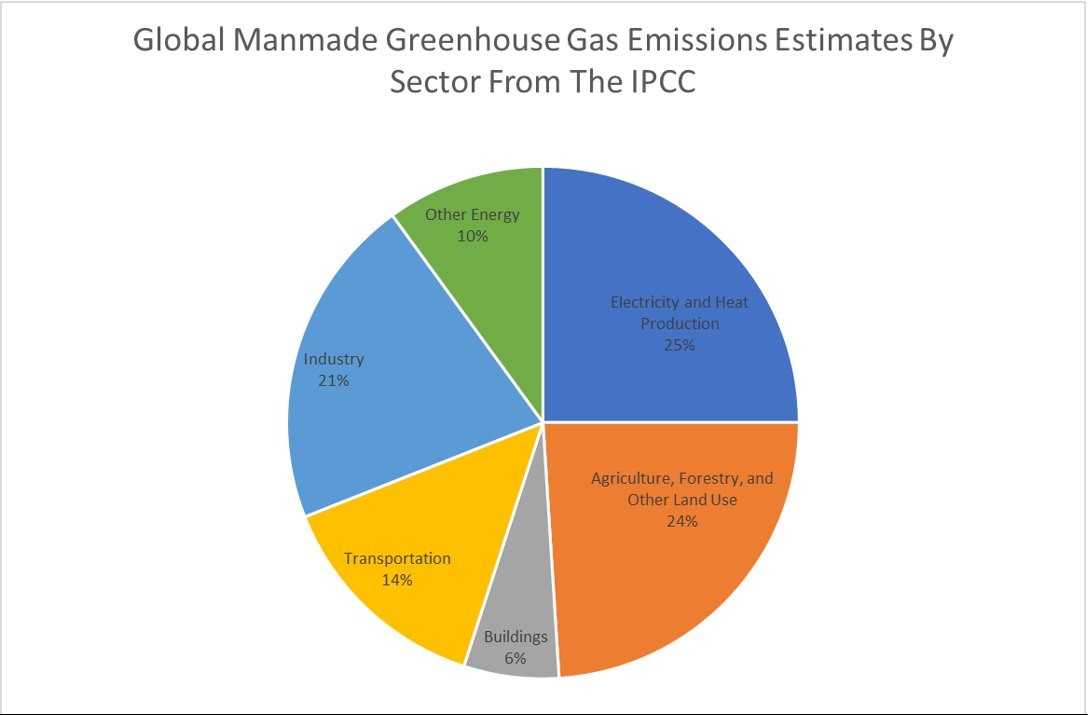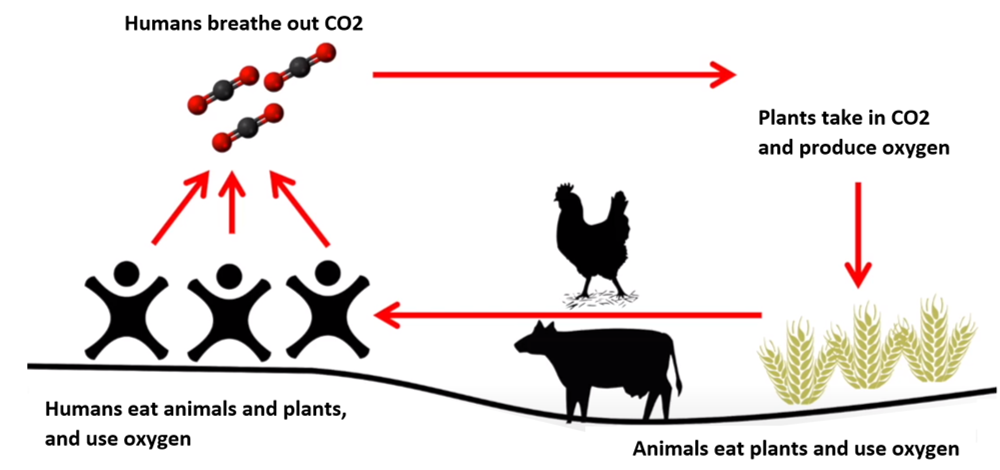 Arguments
Arguments
 Software
Software
 Resources
Comments
Resources
Comments
 The Consensus Project
The Consensus Project
 Translations
Translations
 About
Support
About
Support


Latest Posts
- Skeptical Science New Research for Week #49 2025
- Climate Adam & Dr Gilbz - Paris Climate Agreement At 10: Did It Do Anything?
- Fact brief - Does the recent slowdown in Arctic sea-ice extent loss disprove human-caused warming?
- Why the chemtrail conspiracy theory lingers and grows – and why Tucker Carlson is talking about it
- 2025 SkS Weekly Climate Change & Global Warming News Roundup #48
- Skeptical Science New Research for Week #48 2025
- Consensus machines
- Just have a Think - How an African energy revolution could save ALL of us.
- A girl’s grades drop every summer. There’s an alarming explanation.
- 2025 SkS Weekly Climate Change & Global Warming News Roundup #47
- Fact brief - Are changes in solar activity causing climate change?
- Skeptical Science New Research for Week #47 2025
- Exploring newly released estimates of current policy warming
- Climate Adam - Why the Climate Crisis is a Health Crisis
- Super pollutants are trendy, but we should be careful how we use them
- 2025 SkS Weekly Climate Change & Global Warming News Roundup #46
- Skeptical Science New Research for Week #46 2025
- On the Gates climate memo
- Climate Adam - Climate Scientist responds to Bill Gates
- Five ways Joe Rogan misleads listeners about climate change
- 2025 SkS Weekly Climate Change & Global Warming News Roundup #45
- Skeptical Science New Research for Week #45 2025
- Debunking Joe Rogan, Dick Lindzen, and Will Happer
- Fact brief - Does cold weather disprove human-caused climate change
- Climate change strengthened Hurricane Melissa, making the storm’s winds stronger and the damage worse.
- 2025 SkS Weekly Climate Change & Global Warming News Roundup #44
- Skeptical Science New Research for Week #43 2025
- Climate Adam - Can Solar Halt the Desert?
- Fact brief - Is there empirical evidence for human-caused global warming?
- A “controversial” methane metric?
Archived Rebuttal
This is the archived Intermediate rebuttal to the climate myth "Animal agriculture and eating meat are the biggest causes of global warming". Click here to view the latest rebuttal.
What the science says...
|
Fact: The burning of fossil fuels for electricity and heat accounts for the majority of greenhouse gas emissions, totaling 31% of annual global greenhouse gas emissions, followed by transportation at 15%, manufacturing at 12.4% and animal agricult |
The three largest contributors to global greenhouse gas emissions are burning fossil fuels for electricity and heat, accounting for 31% of annual global greenhouse gas emissions, transportation 15%, and manufacturing 12.4%. The fourth largest contributor is animal agriculture accounting for 11% of greenhouse gas (GHG) emissions according to estimates from the Word Resources Institute, as shown in Figure 1.
One myth argues that animal agriculture is the greatest contributor to global greenhouse gas emissions, claiming it accounts for 51% of annual global GHG emissions.

|
Figure 1: Global manmade GHG emissions by sector reported by the World Resources Institute. Electricity and heat make the largest contribution at 31% with animal agriculture making up 11%. |
While animal agriculture is a significant contributor to GHG emissions, it is not actually the biggest contributor, as the myth claims. The calculations used to get the 51% of global GHG emissions are, at times, inaccurate or inappropriate, leading ultimately to a misrepresentation of the impact of animal agriculture. This rebuttal will be split into two main parts, the first discussing the actual causes of GHG emissions and the second discussing how the non-peer reviewed report by Goodland and Anhang arrives at the 51% number.
Burning Fossil Fuels Really Accounts For The Majority Of Emissions
All estimates on carbon emissions have uncertainty, but different credible sources agree that burning fossil fuels for heat and energy is the largest contributor to global GHG emissions. Independent reports, some of which will be discussed in the following paragraphs, use different methodologies to arrive at the contribution of global GHG emissions. These differences are to be largely due to things like how the variables are grouped, such as grouping land use with animal agriculture or combining manufacturing and production with industrial processes. It is important to note, however, that while there are differences in these figures and numbers, the reports consistently conclude that burning fossil fuels for energy and heat is the largest contributor.
The World Resources Institute is a global research nonprofit that studies environmental sustainability, economic opportunity, and human well-being. The World Resources Institutes Climate Analysis Indicators Tool, a tool designed to analyze GHG emissions by sector and country, concludes that the energy sector accounts for the majority of emissions, around 72%. Within that 72%, are electricity and heat, transportation, and manufacturing which account for 31%, 15%, and 12.4% of annual global greenhouse gas emissions, respectively. Animal agriculture accounts for 11% of the GHG emissions (World Resources Institute). Figure 1 shows a 2013 compilation of these estimates put together using data from the World Resources Institute, showing that the energy sector accounts for the majority of these emissions.
This is not the only estimate of various sectors impact on global emissions. The Intergovernmental Panel on Climate Change (IPCC) is a body of the United Nations focused on studying and understanding human induced climate change. The United States Environmental Protection Agency reports global emissions in the same way that is reported by the IPCC, shown in Figure 2. By these estimates, electricity and heat production account for 25% of global emissions, agriculture, forestry, and land use make up 24%, industry 21%, and transportation 14%. These estimates are different from those noted before, but the reason for the difference is important.

|
Figure 2: Global manmade GHG emissions by sector reported by the IPCC, electricity and heat production make the largest contribution at 25% followed by animal agriculture, forestry, and other land use making up 24% (IPCC). |
For the World Resources Institute and IPCC, the sources for their information and how the numbers are derived are publicly available, compiling reported data from across the globe. As mentioned before, the reason for the differences are largely in grouping. The following section will discuss how the 51% myth bases its numbers on exaggerations and uses completely different methodologies from both of these groups in deriving its numbers.
The 51% Figure Is Based On Poor Assumptions and Exaggeration
As mentioned above, the 51% claim comes from a non peer reviewed paper, containing a series of flaws and fallacies used in arriving at their number. A peer reviewed critique of the paper highlights many of the flaws that consistently exaggerate the effects of animal agriculture. One example is how the paper handles livestock respiration. When animals and humans breathe, CO2 is emitted into the atmosphere and taken in by plants, then converted to oxygen. We breathe and eat the plants and the cycle continues, so when we breathe out, we are returning CO2 that was already there. This is why human and animal respiration are excluded from carbon dioxide emission assessments, as the carbon cycle is accepted to be net zero over the span of years to decades.
Figure 3 helps illustrate the carbon cycle. If this paper chose to take a stance that animal respiration is not net zero, it is possible to account for animal respiration in the emission budget. However, it is also important to calculate the absorption and consumption of CO2 as well to quantify the imbalance due to respiration, which is not done. On top of that, and more pertinent to the matter, if the authors of the paper think that the carbon cycle is not net zero, it would also be necessary to include human respiration in the calculations to adequately assess the appropriate contribution of human CO2 emissions. They assume that the emissions of over 7.5 billion humans alive today are net zero, and livestock emissions are not, which is cherry picking. As is, the paper oversimplifies the issues, leading to a misrepresentation of animal agriculture's contribution to global GHG emissions. Accounting for these issues would cause a major change to the 51% value in the report, as over 26% of the reported emissions by animal agriculture come from animal respiration.

|
Figure 3: A simple diagram of the carbon cycle showing how humans and animals emit CO2 that is then used by plants to make oxygen, which are then eaten (modified from a chart made by Patrick Brown). |
Oversights of this sort occur throughout the paper. Another example is CO2 emissions from land and land use, which contributes to 8.2% of the animal agricultures emissions. In the paper, the myth partially arises from, an extra source of CO2 emission being added to animal agriculture's contribution using a hypothetical ‘what-if scenario’. The paper postulates that if land for animal agriculture were converted to activities such as growing crops for humans or biofuel, there could be emissions savings. These potential savings were then added to the other sources of animal agriculture emissions and treated as a way that animal agriculture contributes to total GHG emissions.
This hypothetical approach is inconsistent with the way that the World Resources Institute and IPCC report global GHG emissions. It is a problematic approach because it then uses the total worldwide emissions that both of these sources report to derive its 51% as opposed to driving and reporting a different, larger, total worldwide GHG emissions total, as would be necessary. Other sources, like fossil fuel burning, are not scrutinized to the point of considering what emissions would be if they were also changed to meet these ‘what-if scenarios’, which would ultimately lead to a vastly different worldwide emission totals (Herrero et al 2011). That is not to discredit ‘what-if’ thought experiments - they can be helpful in outlining potential future changes. But in a study on actual current emissions, it is inconsistent and inappropriate to include them as emissions. Altogether, these errors consistently overestimate the impact of animal agriculture.
Everyone Can Help The Environment In Their Own Way
There is a lot of discussion on how animal agriculture impacts various countries differently. It is possible to cherry pick examples from countries and argue that animal agricultural emissions are far more (or less) impactful on emissions than global numbers show. However, just because there are some countries that show different contributions from animal agriculture than are shown in a look at the globe as a whole, it does not mean that animal agriculture is misrepresented globally.
Similarly, one oversimplifying argument is that even if animal agriculture is not the main cause of global emissions, going vegan is the easiest thing one as an individual can do to lower their impact on global emissions. This is a difficult argument to support or disprove, as the benefit and ease of going vegan comes down to personal choices as well as the region one lives in. Everyone lives a different life and a person’s health, their living situation, and personal choices all play a role in the impact that they can make in reducing GHG emissions. There is no cookie-cutter, one-size-fits-all solution as to what can be done. The best way that you can lower your impact on global emissions is to be cognizant of your actions and actively work to minimize activities that create emissions whenever possible. For anyone interested, a list of some ways you can modify your lifestyle is included here. While animal agriculture does not contribute most of the CO2 emissions, it is still a significant contributor. Nevertheless, creating misleading or erroneous statistics to push a false narrative is counterproductive and only serves to hurt the causes that one is seeking to advocate for.
Updated on 2017-09-28 by dana1981.
THE ESCALATOR

(free to republish)
























































